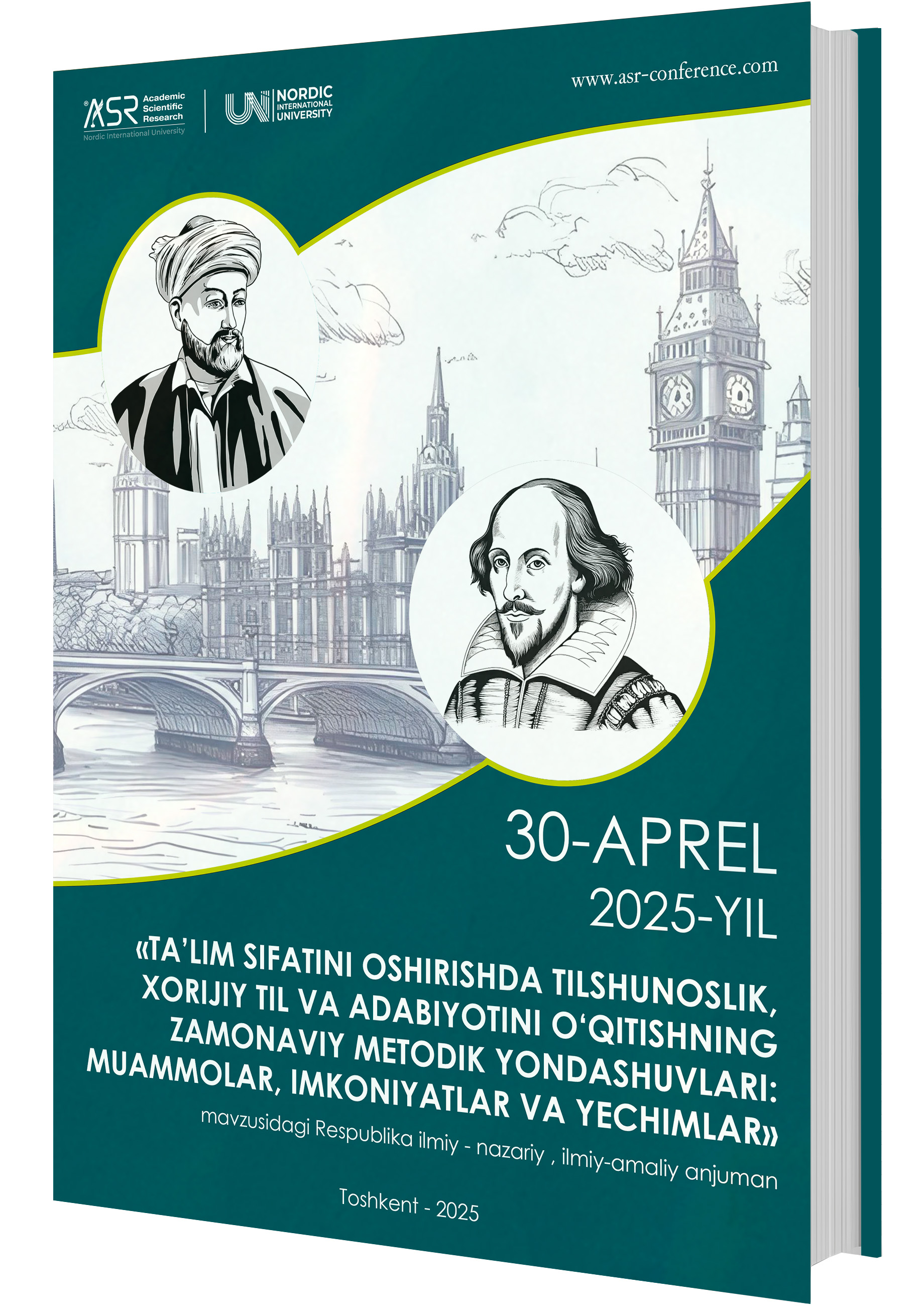A COMPARATIVE STUDY OF ENGLISH AND UZBEK BODY METAPHORS
Аннотация
This study examines body-based metaphors in Uzbek and English, focusing on how body parts like the heart, head, and hand are used to express ideas such as emotion, intelligence, morality, and social values. The results show that both languages use similar metaphors for some body parts, however, there are important cultural differences. For example, in Uzbek, the liver "jigar" is used to show love and affection, which is not common in English.
Библиографические ссылки
Gibbs, R. W. (2006). Embodiment and cognitive science. Cambridge University Press.
Karimov, A. (2010). O‘zbek tilida metaforik ifodalar: Semantik va madaniy tahlil. Tashkent State University Press. (In Uzbek)
Kövecses, Z. (2005). Metaphor in culture: Universality and variation. Cambridge University Press.
Lakoff, G., & Johnson, M. (1980). Metaphors we live by. University of Chicago Press.
Oxford University Press. (n.d.). Oxford Learner’s Dictionary. Retrieved from https://www.oxfordlearnersdictionaries.com
Pragglejaz Group. (2007). MIP: A method for identifying metaphorically used words in discourse. Metaphor and Symbol, 22(1), 1–39. https://doi.org/10.1207/s15327868ms2201_1
Sharifian, F. (2011). Cultural conceptualisations and language: Theoretical framework and applications. John Benjamins Publishing.
Yu, N. (1995). Metaphorical expressions of emotions in Chinese and English. Metaphor and Symbolic Activity, 10(2), 59–92. https://doi.org/10.1207/s15327868ms1002_2
Загрузки
Опубликован
Выпуск
Раздел
Лицензия
Copyright (c) 2025 Zilola Berdiyeva

Это произведение доступно по лицензии Creative Commons «Attribution-NonCommercial» («Атрибуция — Некоммерческое использование») 4.0 Всемирная.
Условия лицензии
Эта работа доступна под лицензией Creative Commons Attribution-NonCommercial 4.0 International License. Чтобы просмотреть копию этой лицензии, посетите http://creativecommons.org/licenses/by-nc/4.0/ или отправьте письмо по адресу Creative Commons, PO Box 1866, Mountain View, CA 94042, США.
По этой лицензии вы можете:
Поделиться — копируйте и распространяйте материал на любом носителе и в любом формате.
Адаптируйте — делайте ремиксы, трансформируйте и дорабатывайте материал.
Лицензиар не может отозвать эти свободы, если вы соблюдаете условия лицензии. На следующих условиях:
Атрибуция. Вы должны указать соответствующую ссылку, предоставить ссылку на лицензию и указать, были ли внесены изменения. Вы можете сделать это любым разумным способом, но не таким образом, который бы предполагал, что лицензиар одобряет вас или ваше использование.
Некоммерческое использование — вы не имеете права использовать материал в коммерческих целях.
Никаких дополнительных ограничений. Вы не имеете права применять юридические условия или технологические меры, которые юридически запрещают другим делать все, что разрешено лицензией.





